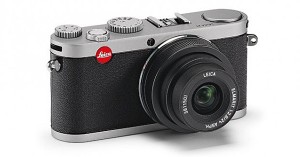Very useful DP Review of the new Leica compact. It concludes:
The biggest problem when drawing a final conclusion on the X1 is of course the typical Leica price tag – this is the most expensive compact camera on the market by a huge margin. It faces strong competition too, with the availability now of other, more flexible small cameras namely the Panasonic GF1 and the Olympus Pen twins at a significantly lower price level. These Micro Four Thirds cameras are all faster and more responsive in use, and of course have the advantage that they can be fitted with an array of different lenses. Particularly relevant to this comparison is the excellent Panasonic Lumix G 20mm F1.7 ASPH, which negates one of the X1’s greatest strengths – its high ISO image quality – by gathering a stop and a half more light than the X1’s F2.8 Elmarit. This allows a GF1 user to set at least a stop lower ISO at any given light level, equalizing out the difference between the sensors; and for static subjects at least, an Olympus owner can take advantage of in-body image stabilization to use a lower ISO still.
So what, if not low-light image quality, is left in favor of spending $2000 on the X1? The traditional-style control layout will certainly appeal very strongly to some, the near-silent leaf-shutter can be a distinct advantage over the louder focal-plane shutters in the Micro Four Thirds cameras for some uses, and the lighter weight isn’t to be totally dismissed. No doubt for some users these advantages will be sufficient reason to buy, but for the majority of photographers, it's impossible not to conclude that, despite the X1’s charms, a Pen or a GF1 would be a more sensible option.
* With apologies to Dorothy Parker (or perhaps Walter Kerr?)

